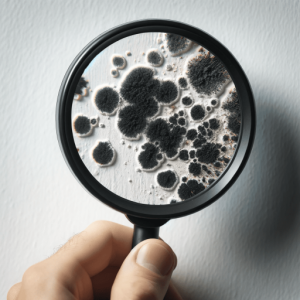PAMPs, DAMPs, and Beyond
Protecting Your Health: Demystifying Indoor Air Triggers
Breathing clean air is crucial for our well-being. However, the air inside our homes and workplaces can harbor hidden dangers known as indoor air triggers. These triggers can cause various health issues, impacting individuals with varying degrees of sensitivity. Understanding these triggers empowers you to take control of your environment and potentially improve your health.
PAMPs and DAMPs: Recognizing Intruder Signals
Two important concepts in understanding indoor air triggers are PAMPs (Pathogen-Associated Molecular Patterns) and DAMPs (Damage-Associated Molecular Patterns). In simpler terms, imagine your body has tiny “receptors” that act like security guards, constantly scanning your environment for potential threats.
- PAMPs: These are “calling cards” left behind by dead or alive bacteria and fungi (like mould). When your body’s receptors detect these PAMPs, they can trigger an inflammatory response, causing symptoms like fatigue, headaches, and difficulty concentrating.
- DAMPs: These are signals released by damaged or stressed cells, including those from dead or dying mould and bacteria. Similar to PAMPs, DAMPs can also trigger an inflammatory response.
Beyond PAMPs and DAMPs: A Wider Spectrum of Triggers
While PAMPs and DAMPs are significant, they are not the only indoor air triggers:
- Viruses and parasites: Although less common, these organisms can also contribute to indoor air quality issues and trigger health problems.
- Man-made chemicals: Building materials, cleaning products, and personal care products can emit volatile organic compounds (VOCs) that can irritate the respiratory system and cause other health concerns.
- Fragrances: Perfumes, deodorants, and even scented cleaning products can trigger sensitivities in some individuals.
The Importance of Trigger Reduction and Management
Studies have shown that by identifying and removing indoor air triggers, individuals with certain sensitivities may experience significant health improvements. This includes those with:
- Multiple Chemical Sensitivities (MCS)
- Autoimmune diseases like Parkinson’s and some cases of autism
- Mast cell activation syndrome (MCAS)
It’s important to remember that individual experiences can vary. What works for one person might not work for another. However, understanding and addressing potential triggers in your environment can be a crucial step towards improving your health and well-being.
Seeking Professional Guidance
If you suspect you might be sensitive to indoor air triggers, it’s essential to consult a healthcare professional. They can help you assess your symptoms, develop a personalized plan to manage triggers and recommend further testing or treatment options if needed.
By understanding indoor air triggers and taking steps to address them, you can create a healthier and more comfortable environment for yourself and your loved ones

